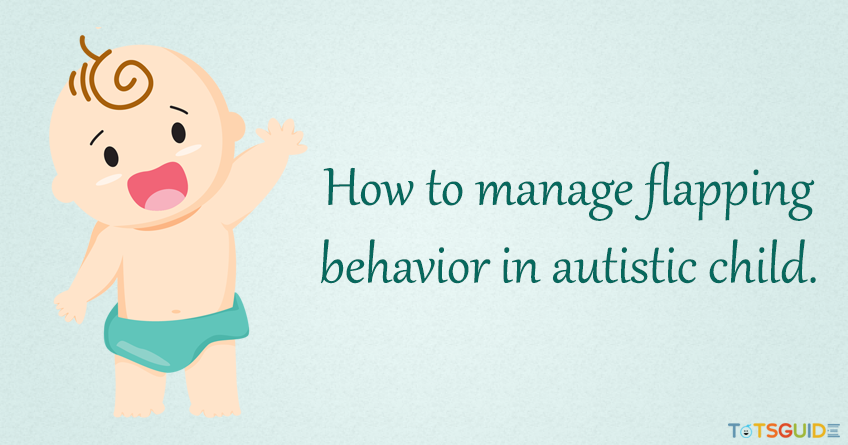
Certain autistic children have stimulatory repetitive behavior known as stereotypic behaviour or stimming. In children with autism, this usually refers to specific behaviors that include hand- flapping, rocking, spinning, or repetition of words and phrases.
Here are few concepts to overcome stimming in general, including hand flapping:
Recognizing that everyone stims
Whenever you pace, fiddle with your hair, bite your pencil, or squeeze your hands, you're stimming. Stimming is both more necessary and more noticeable in autistic children, due to sensory issues.
Addressing the child's emotions
If the child is stimming because of their feelings, then try to identify that feeling and respond to it appropriately. Think of emotional stimming like a facial expression—it's a way for them to express something.
Child's unique stimming pattern:
Unlike facial expressions, stims are not universal and can mean different things for different people. Notice the child's individual stims. They can give you clues to how they're doing, and can even show signs of oncoming meltdowns before they begin. Here are some example individual stims:
Child flaps his arms when he feels overwhelmed.
Child paces whenever they fall into deep thought.
Child bites the fingers/nails when they are worried.
Toys to enhance concentration and self-calming
We can purchase them online, make them yourself, or repurpose common objects such as flashlights and string. Keep a box of stim toys in an accessible place where your child can easily get whatever they need.
For calmer trips out and about, ask a child to pick a stim toy from the box to take along.
Write down where you found each stim toy, in case they break or become misplaced.
Moderate hyperactivity with exercise
If a child is stimming so much that they can't focus, then they need more exercise.
Go to playgrounds, set up a basketball in the driveway, go to pools, take family walks, and have plenty of sports equipment available for backyard sports.
It may be worth purchasing a swing or playground set for your yard if possible.
The following might be few instances that is triggering hand-flapping/stimming in children with autism. Try the listed possible Replacement Behaviors to control stimming:
Child Has Been Sitting for Too Long
Suggest the child to move and pick up/get something
Offer alternative seating for the child, such as a chair vs. floor, sitting on a pillow, sitting on a small exercise ball, etc.
Offer child a toy to play with while sitting (something small and non-distracting that can keep his hands busy)
Child is Tired
Offer child a short nap (if possible)
Child is Excited
Replace with clapping hands
Replace with squeezing hands together
Child is Angry/Upset
Replace with squeezing/hitting a pillow
Have child request break/go for a walk
Engage child in Self-Calming Strategies
Child is Flapping/Sensory Input in Fingers
Replace with squeezing hands or pushing hands together
Offer child a stress ball or squeezable toy to play with
Make the child sit on his hands (to feel that pressure)
Child is Rocking/Sensory Input for Balance and Body
Have your child rock side to side instead of front to back. This looks more like swaying along to music than the traditional rocking.
Offer child a big hug, squeeze him tightly all over his torso to get that pressure
